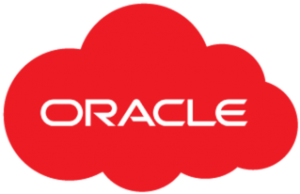Both Microsoft and Oracle’s SQL servers serve the same purpose: they’re relational database management systems (RDBMS). A RDBMS lets you create and update relation databases-SQL is used to get that job done.
Microsoft SQL Server
You can use Microsoft SQL Server to build, deploy, and manage applications, whether they be on-premises or in the cloud. It used to be only available on Windows, but as of 2016, it also runs on Linux so users can now run it on Docker containers as well. It’s split into two engines, one that handles commands and queries, and another that manages pretty much everything else. And, because it’s built around a row-based table structure, it lets related data stay connected. It might not seem much, but it avoids redundancy and gives you more data integrity.
Oracle

Oracle’s Database was the very first one to be designed for enterprise grid computing—and it was done all the way back in 1979! Enterprise grid computing means that it creates large pools of modular storage servers and then does the work on those pools. This means no peak workloads, as capacity can be added or relocated from other pools as needed. Physical and logical structures are separate, so they can be managed without affecting each other.
Now that we’ve got the basics down, let’s take a look at the differences!
Language
Although both systems use a version of Structured Query Language (SQL), they don’t quite use the same versions. Microsoft uses an extension of SQL called Transact SQL (or T-SQL), whereas Oracle goes with Procedural Language/SQL. These two variations have different syntax, capabilities, and handle some things (like variables, built-in functions, and stored procedures) differently.
Oracle has the more powerful version of the language, letting you do things you can’t with Microsoft’s. But this power comes with added complexity. So while Microsoft’s chosen SQL version might not offer many functions, it is much simpler to use and learn.
Database Object Organization
Both of these RDBMS organize database objects differently. Microsoft’s organizes them all by database names, whether the objects be tables, views, or procedures. Each user login has access to a specific database and its objects, and each database has a private disk file on the server.
With Oracle, the objects are grouped by schemas (structures defined in a formal language that’s supported by the database), which are, in turn, a subset collection of database objects. All these objects are shared among all schemas and users, but each user can be limited to certain schemas and tables through roles and permissions.
Transaction Control
A transaction is a group of operations that is treated as a single unit. For example, imagine you need to run an update, and you need all the records on that update to be modified. A successful transaction would have them all updated, and a failure would mean no record would be updated.
Microsoft’s SQL server handles transactions by executing and committing each command individually, thus making it very difficult to roll back changes if the transaction fails in the end. There is, of course, a way around this, and that’s by grouping statements and only committing at the end. So, unless all transactions pass, you can still rollback, as changes aren’t written into the disk until you commit.
Oracle, however, treats each new database connection as a new transaction. While queries and commands are being executed, they’re written to memory and not the disk. They won’t be unless you explicitly write the commit statement (save for DDL command cases, which include implicit commands). After a commit, the transaction is closed, and a new one will begin with the next command. This allows for more flexibility and helps with error control.
Bottom Line
Both Oracle and Microsoft SQL Server are great RDBMS options, and can both be used in similar ways. Both offer enterprise-level solutions, both make it easier to recover data than the rest of the competition. Microsoft’s might be easier to learn, but that simplicity comes with some drawbacks. And although Microsoft offers tools like SQL Server Profiler and BI Tools, you might not need these to effectively run your database. What Microsoft is unmatched in is the level of support, since its documentation is stellar, and provides live product support, but Oracle is better at handling larger amounts of data.
As with everything it depends on what you want to do, and the situation you’re in. If you’re considering adopting one of these RDBMS tools and can’t decide which, remember you can always drop us a line here at ESW Associates.